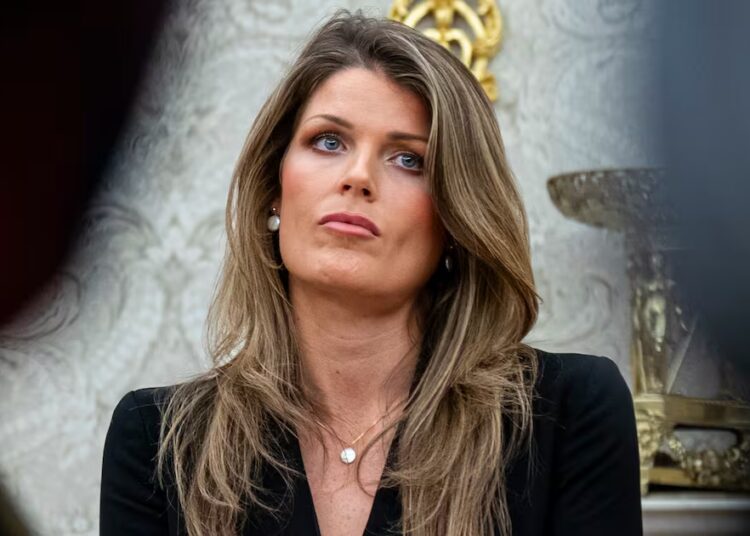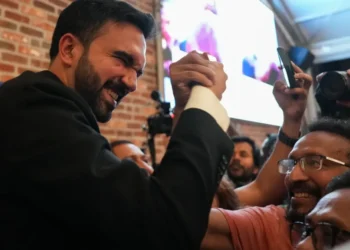Jessica Martinez was about 12 years old when she stopped using relaxers for her textured hair. In the roughly two decades since, her hair has flourished into a bountiful Afro. The largest one in the world, in fact.
On Wednesday, Guinness World Records announced that Ms. Martinez, 29, had officially set a new mark for a woman with an Afro that measures 190 centimeters (around 6 feet 3 inches) in circumference, surpassing Aevin Dugas, who in 2010 had set the previous record of 165 centimeters (around 5 feet 5 inches).
Last month, an adjudicator from Guinness visited Ms. Martinez to measure her hair. “He couldn’t do it by himself” and needed two extra pairs of hands, Ms. Martinez said.
Breaking the record felt significant for Ms. Martinez, who works at a criminal justice nonprofit organization in New York. “It’s not every day that an Afro is celebrated,” she said.
Black hair has long been discriminated against. As a result, starting in the early 1900s, hot tools and chemical relaxants were used to fashion textured hair into a form and shape that better aligned with Eurocentric beauty standards. In a 2019 survey of 2,000 women, conducted by Dove, a majority of Black women said that they had changed their hair to fit into the workplace and that they felt their natural hair was perceived as unprofessional.
It is in only the last few years that states have passed laws to ban hair-based discrimination — often called the Crown Act, an acronym for “Create a Respectful and Open Workplace for Natural Hair” — though protection still doesn’t exist at the federal level.
“Some people still view the Afro as unkempt,” said Ms. Martinez, who also posts hair content on social media. “Natural hair is a lifestyle. It’s not a trend, and it’s not something that should be policed.”
Ahead of the official announcement of the record, Ms. Martinez discussed the feat in an interview that has been edited and condensed for clarity.
When did you start leaving your hair in its natural form?
My freshman year of college was the very last silk press I ever had. I just didn’t feel that it fit me anymore. I had kind of outgrown that style. Then I started to just nurture it back to life by learning how to do braid outs and twist outs. I never did a big chop. I just let the broken hair fall off. Slowly but surely my curl pattern started to become more and more coily.
What was that journey like?
My hair has always been a conversation piece. It’s like an icebreaker for people. They’ll compliment my hair or ask me a question. It’s very important to me to wear my natural hair in the workplace and also to encourage other people to do it.
When people ask you about your hair, can it feel like a microaggression?
I can tell the difference between microaggressions and just curiosity. In the past, I’ve gotten remarks like, “Ugh, just looking at all that hair is making me feel anxious,” which is obviously about them, not about me, right? I’ve had professors who thought they were helping me by giving me advice around how I should present my hair going into the workplace. I’ve worked at places where my hair became a conversational piece in a way that didn’t feel comfortable, and I ended up leaving.
People always want to touch my hair. I think I get it a little bit more than other people do because I feel so comfortable wearing my hair just as it is.
But I always come from a space of compassion. I have a lot of experience navigating these situations, so I go into them very calmly. And I’m very thankful for the Crown Act. I do feel a level of comfort knowing there is some form of legislation in place to protect me from hair harassment and discrimination.
So what made you want to go after this record?
It wasn’t on my radar until I posted a video of my Afro on Instagram in 2023, and people started commenting, “You should go after the world’s largest Afro.” That’s when the seed was planted. I didn’t do anything with that idea for about a year or so, and then I thought, “You know what? Let me try to challenge myself.” So first you have to submit evidence to Guinness that you are even capable of potentially breaking the record. Then there’s a three-month waiting period when they review your application. Once that was approved, I had exactly one year to make my attempt.
What message are you hoping to send?
That people will ultimately come to a space and place where they also feel that their hair is not a burden. I believe the bigger, the better.
Alisha Haridasani Gupta is a Times reporter covering women’s health and health inequities.
The post The World’s Largest Afro Took Three People to Measure It appeared first on New York Times.




